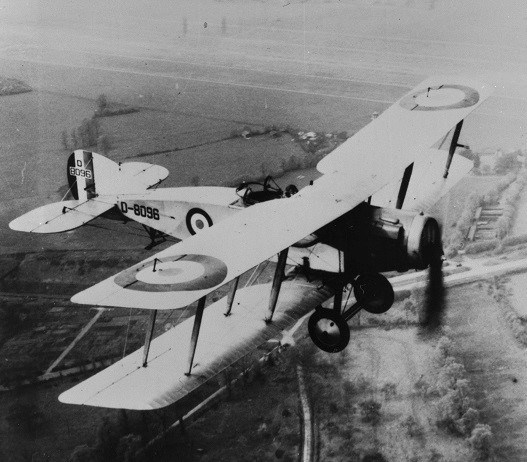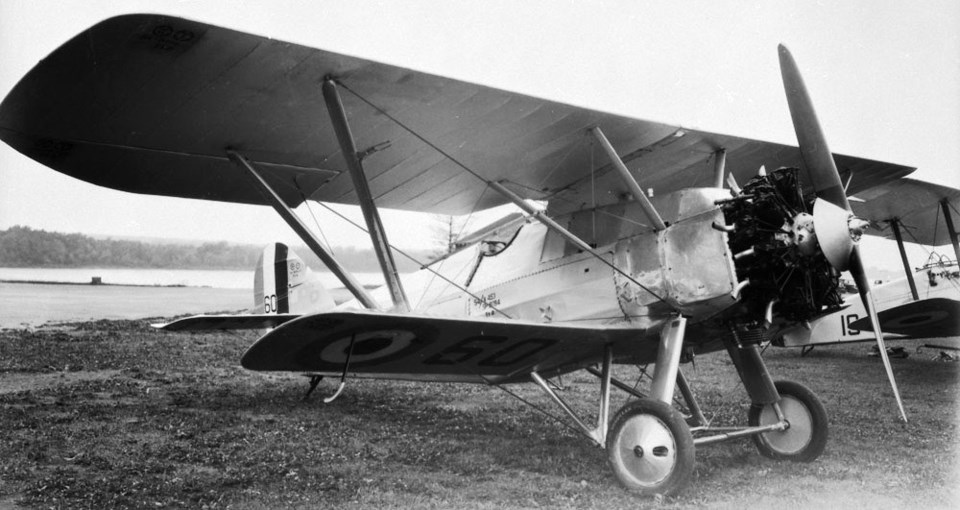Air Demonstration Teams have been a fixture within the RCAF since June 1929.
Origin of the RCAF
On February 18, 1920, the Government of Canada authorized a new, non-permanent Canadian Air Force (CAF) with a provisional establishment of 1,340 officers and 3,905 airmen. In 1924 “Royal” was added (RCAF) after the Australians added ‘Royal’ (RAAF) to their name.
The backbone of the new CAF were 101 raggedy World War I Bristol Fighters donated by Great Britain. Canadian pilots referred to the aircraft as ‘Brisfits’ – a fitting term.
 (supplied)
(supplied)
This Bristol was stationed at Camp Borden, Ontario.
The early RCAF hunted smugglers, undertook forest fire patrols in the north, did aerial forest spraying and mail delivery, flew mercy flights, helped police and did aerial photography and surveying.
The RCAF acquired Armstrong Whitworth Siskin IIIA biplanes in 1926 and flew them until 1939, when they were replaced by the Hawker Hurricane.
The Siskin was a great aerobatics machine. Young pilots love aerobatics.
(Captain Al Seward of Moose Jaw loved to describe ‘flying the contours of clouds’ at Gimli, Manitoba in his T-33 Trainer. No doubt, other RCAF Pilots have similar experiences.)
Three Siskin IIIA biplanes became the first RCAF Aerobatic Demonstration Team. The Team was formed in June 1929 to celebrate the 10th Anniversary of the first Trans-Atlantic flight by Brits John (Jack) Alcock and Arthur Brown.
This first RCAF Aerobatic Team flew over 100 air shows between 1929 and 1932.
The Aerobatics Team and most military spending was axed in 1932 by Prime Minister R.B. Bennett’s Government as part of the Great Depression austerity program.
Spending on the military, deemed unnecessary by Canada, evaporated between 1930 and 1939. Hitler had other ideas.
More information can be found at the RCAF Web-Site.
Correction - Origin of the RCAF
Thank you for publishing Mr Dowson's interesting piece regarding the history of RCAF Aerobatic Teams in Vol. 13, Issue 48 of the Moose Jaw Express. In the paragraph following the header "Origin of the RCAF" he discusses the so-called "Imperial Gift" of 115 aircraft and suggests that they were all Bristol F.2B (Brisfit) Fighters. There were, indeed, two Bristol Fighters amongst this cache of aircraft. That said, according to aviation historian Hugh Halliday, the full list was as follows:
- Avro 504 - 62
- de Havilland D.H.4 - 12
- de Havilland D.H.9 - 12
- Royal Aircraft Factory SE.5a - 12
- Felixstowe F.3 Flying Boat - 11
- Curtiss H.16 Flying Boat - 2
- Bristol F.2b Fighter - 2
- Sopwith Snipe - 1
- Fairey IIIc Seaplane - 1
For a detailed discussion of the aircraft presented to Canada, and their subsequent use, please see Mr Halliday's piece "The Imperial Gift" in the Spring 2009 (Vol. 47, No. 1) issue of the Canadian Aviation Historical Society (CAHS) Journal, pages 24 through 34.
Yours sincerely,
Edward Soye




